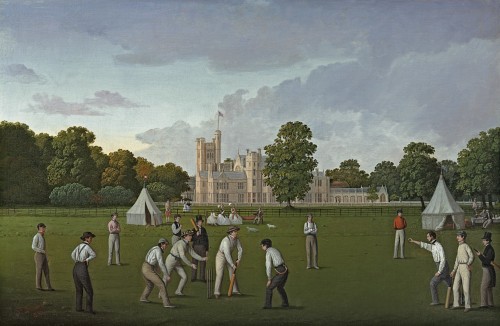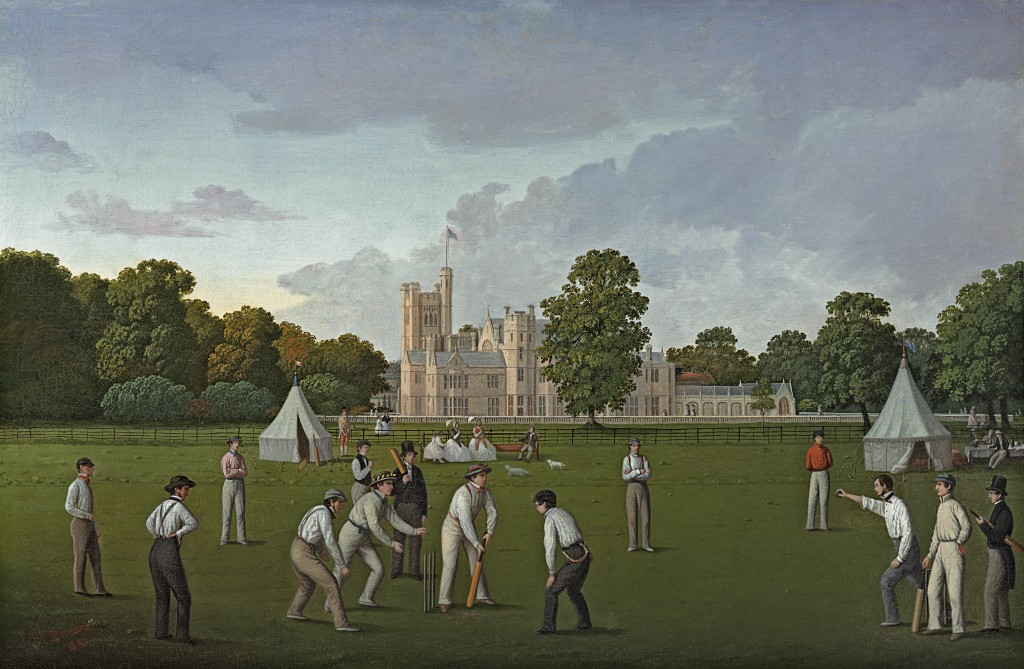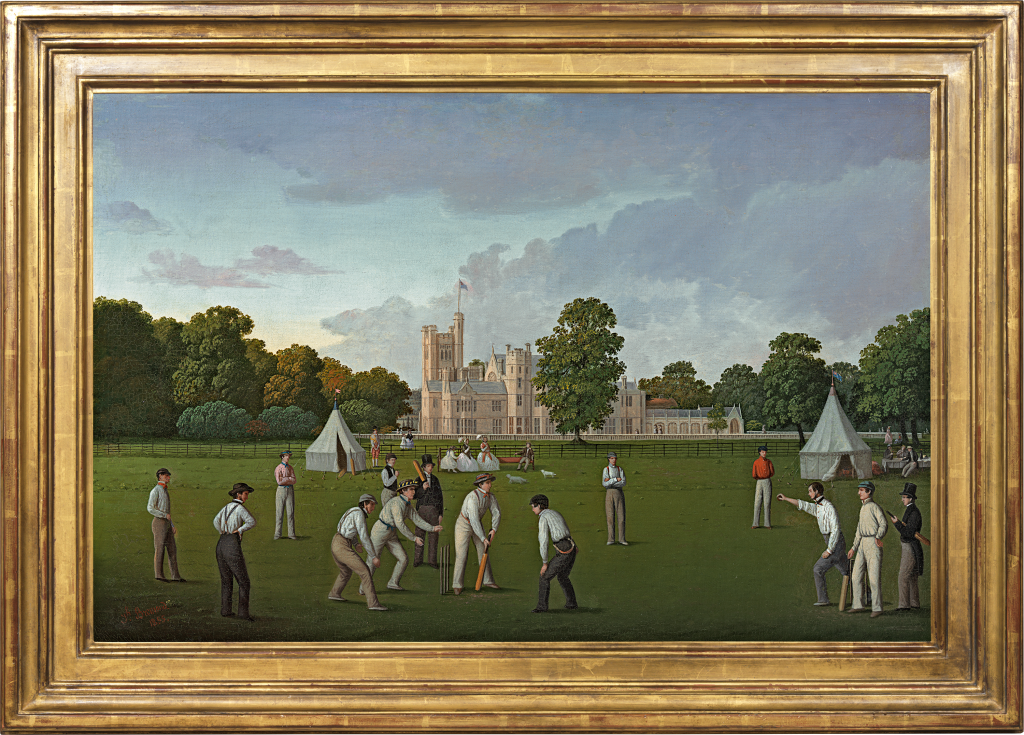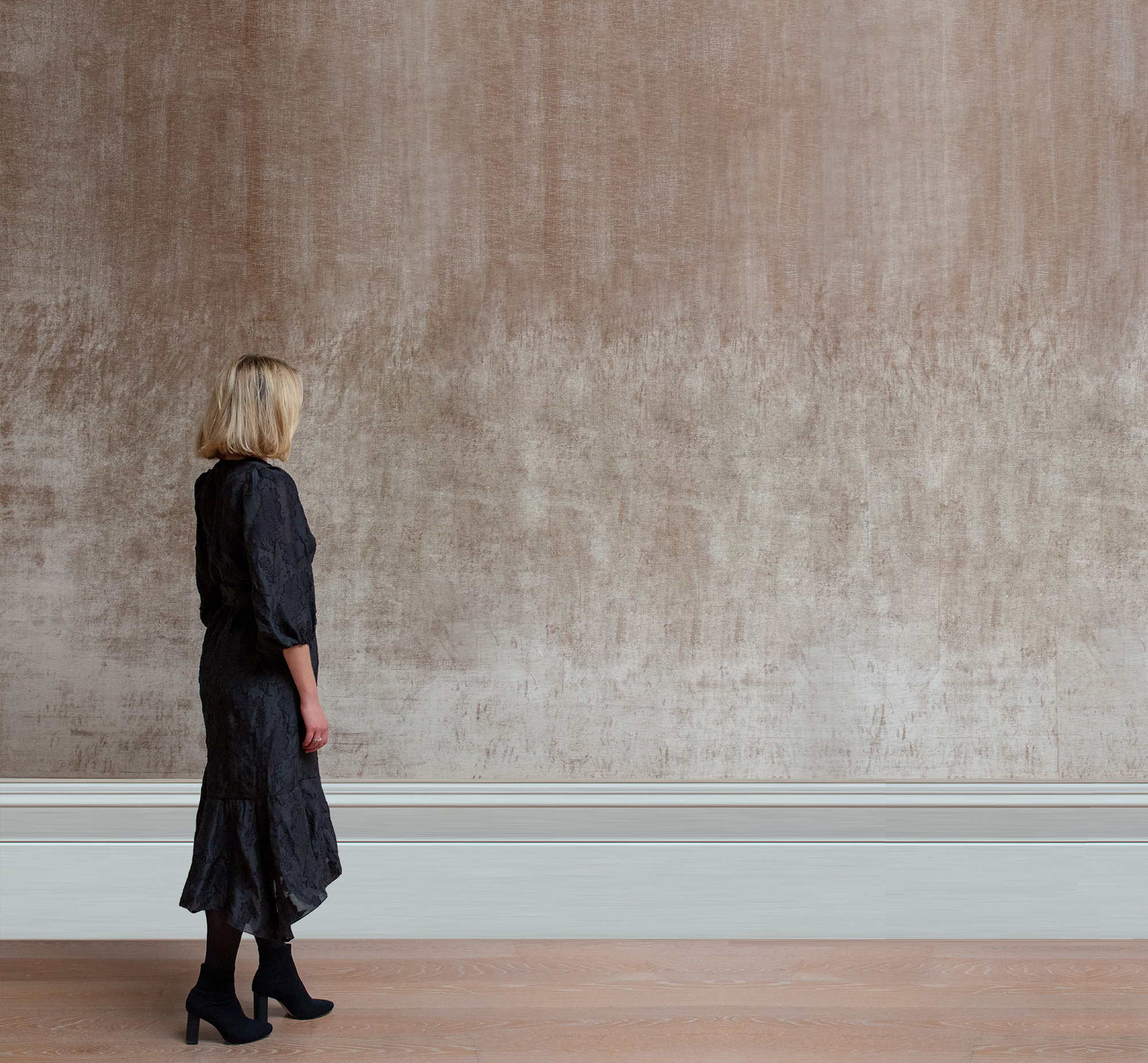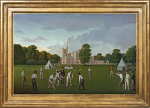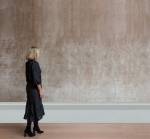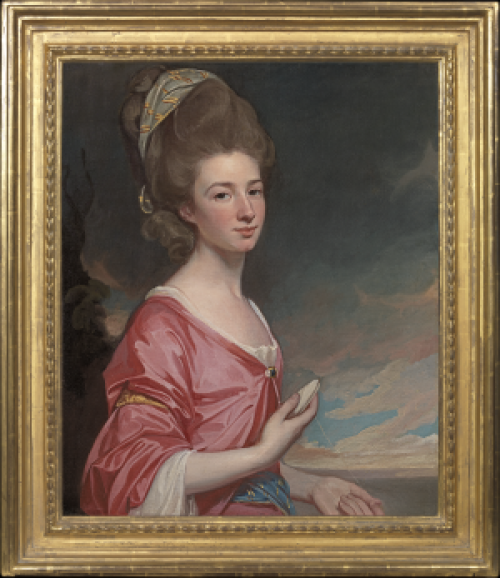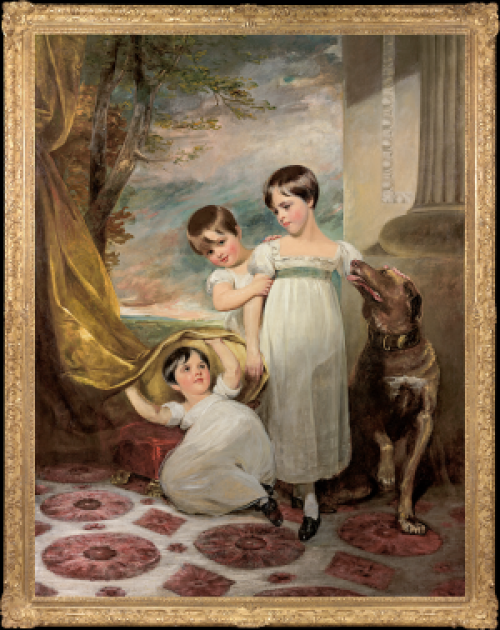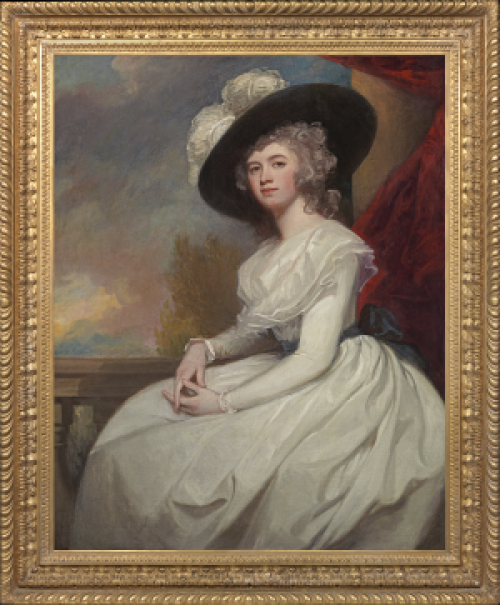THOMAS BREMOND
Active 1855
Ref: CD 127
A cricket match at Canford Manor, Dorset in 1855
Signed and dated lower left: Th. Bremond / 1855
Oil on canvas: 19 ¼ x 29 in / 48.9 x 73.7 cm
Frame size: 25 x 35 in / 63.5 x 88.9 cm
Provenance:
Lady Charlotte Guest (later Lady Charlotte Schreiber) (1812-1895), Canford Manor, Dorset;
by descent to Ivor Guest, 4th Viscount Wimborne (b.1968)
Literature:
Lady Charlotte Guest Extracts from Her Journal 1833-1853, edited by the Earl of Bessborough, vol. 1, illus. opposite p.186
Canford 100 1923-2023, Centenary Celebration Book, 2025, Richard Knott, ‘A History of Canford in 100 Objects’, p.21, illus. in colour
Most cricketing pictures are about men. This painting concerns a woman, the polymath and philanthropist Lady Charlotte Guest (1812-1895), one of the most extraordinary people of the Victorian age.
Lady Charlotte was the daughter of Albemarle Bertie, 9th Earl of Lindsey. Bored by the fripperies of aristocratic life, she taught herself Arabic, Hebrew and Persian as a teenager. In 1833, at the age of twenty-one, partly to escape her suffocating family, she married ‘Trade’, the forty-eight-year-old ironmaster John Guest, owner of the Dowlais Works in Wales, which became the largest in the world. It produced cannonballs for the British Army and railway tracks for the ‘iron roads’ that were speeding progress across Europe and into Russia.
The marriage was happy, producing ten children. In her spare time, Lady Charlotte mastered medieval Welsh and made the first comprehensive translation of The Mabinogion (1838-45). Her Romantic medievalism is reflected in Canford Manor, the house on their Dorset estate commissioned by the Guests from Sir Charles Barry in 1847. Incorporating the remains of a fifteenth century mansion, it featured a Great Hall and a Nineveh Porch to house reliefs excavated from the Assyrian city in 1849 by Charlotte’s cousin Henry Layard. Charlotte sponsored the publication of Layard’s research.
When Sir John Guest died in 1852, Lady Charlotte took over the management of the Dowlais Works, even facing down striking employees. The Cricket match was made during this turbulent period, against a background of the start of the Crimean War and outbreaks of Asiatic cholera at Dowlais. To her astonishment, Lady Charlotte found herself falling in love with her son Ivor’s Cambridge tutor, Charles Schreiber, a man fourteen years her junior. At Canford in the summer of 1854, as Lady Charlotte’s grandson Lord Bessborough later commented, ‘there was a great deal of cricket in which Ivor and his tutor took a prominent part’[1]. Charlotte and Charles were married on 10th April 1855.
The painting is by Thomas Bremond, an otherwise unrecorded artist, apart from a view of The weir at Canford which was also in the Wimborne Collection[2]. He may have been a family friend from one of Charlotte’s many house parties, or a local man. It shows a cricket match in the idyllic setting of Canford, with Charles Barry’s imposing mansion, seen from the south-west, as the backdrop. Is it too fanciful to assume that the bowler is Charles Schreiber and the batsman the young Ivor? The picture is dated 1855, the year of Charlotte’s second marriage. On 29th August 1856 Ivor was to come of age and inherit Canford. As Charlotte, rather melodramatically, wrote in her Journal: ‘My reign was to be over for ever, and I was to be ready to go forth as a wanderer on the face of the earth’[3]. The cricket matches at Canford were perhaps a symbol of the domestic harmony that Charlotte craved: Ivor was the only one of her ten children who open-heartedly accepted Charles. However, cricket continued to flourish at Canford, as a photograph from the 1860s of a team outside the south front – wearing headgear as assorted as that in Bremond’s painting - proves[4]. A second photograph shows Charles Schreiber, Charlotte and two of her sons, one in cricketing gear[5]. Ivor Guest (1835-1914), who became 1st Baron Wimborne in 1880, was devoted to the sport.
For compositional purposes, the players in Bremond’s painting are grouped together more closely than they would have been in reality. The batsman is bowling roundarm, a style which became popular in the early nineteenth century, but which was not legalised by the Laws of Cricket until 1835. Modern overarm bowling was not acceptable until 1864. The variety of clothing among the teams is typical of cricket matches in the mid-nineteenth century, especially informal, country house matches, although a predominance of white shirts is already typical[6].
In the distance in the painting, a lady in a pink shawl serenely watches the match from under her parasol, probably Lady Charlotte with three of her younger children. There are two round, flag-flying tents with the jaunty air of the tents in Henry VIII’s Field of the Cloth of Gold, one with a footman in livery flanking it. Although Lady Charlotte had married ‘Trade’ and gloried in the fact that ‘I am iron now’[7], things were done with all due aristocratic propriety at Canford. As she frankly confided to her Journal, ‘whatever I undertake I must reach an eminence in. I cannot endure anything second grade’[8].
Canford was sold in 1923 and became the celebrated public school which flourishes to this day, with a keen tradition of playing cricket.
Playing cricket at Canford Manor in the 1860s.
© Port Eliot Collection.
Lady Charlotte Schreiber, formerly Guest, in the 1860s.
© Port Eliot Collection.
[1] Lady Charlotte Schreiber Extracts from Her Journal 1853-1891, edited by the Earl of Bessborough, vol. 2, London 1952, p.40.
[2] Christie’s London, 9th April 2025, lot 316. In the foreground is a man sketching with a lady watching him.
[3] 28th August 1856, quoted in Schreiber, ed. Bessborough, op. cit., vol. 2, p.61.
[4] Photograph in the collection of the Earl of St Germans, Port Eliot, Cornwall. Lady Charlotte’s grandsons Granville Eliot (1867-1942) and Montague Eliot (1870-1960) became the 7th and 8th Earls of St Germans respectively. See EliotsofPortEliot.com, photograph album Degemer/Merker Canford Manor/Box B Album B (3).
[5] Victoria Owens, Lady Charlotte Guest: The Exceptional Life of a Female Industrialist, Barnsley 2020, illus. opposite p.87. This photograph, also from the 1860s, is in the Port Eliot Collection, Degemer/Merker Canford Manor/Box B Album B (2).
[6] We are very grateful to Alan Rees and Neil Robinson of the Marylebone Cricket Club Archive and Library for their comments on the style of play and dress.
[7] Lady Charlotte Guest, Journal, 12th April 1836, quoted in Angela V John, ‘Schreiber [née Bertie; other married name Guest], Lady Charlotte Elizabeth’, Oxford Dictionary of National Biography, 2004.
[8] Journal, 27th April 1839, quoted in ODNB, ibid.

